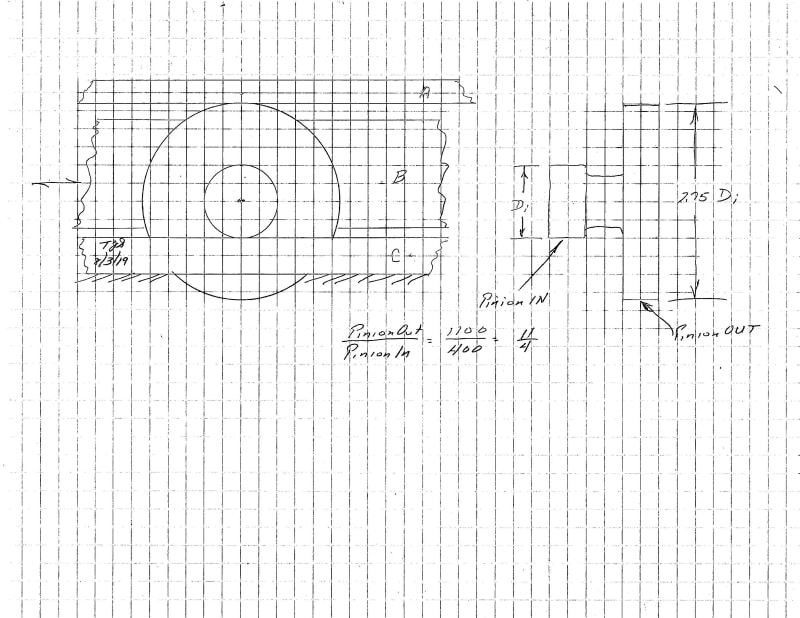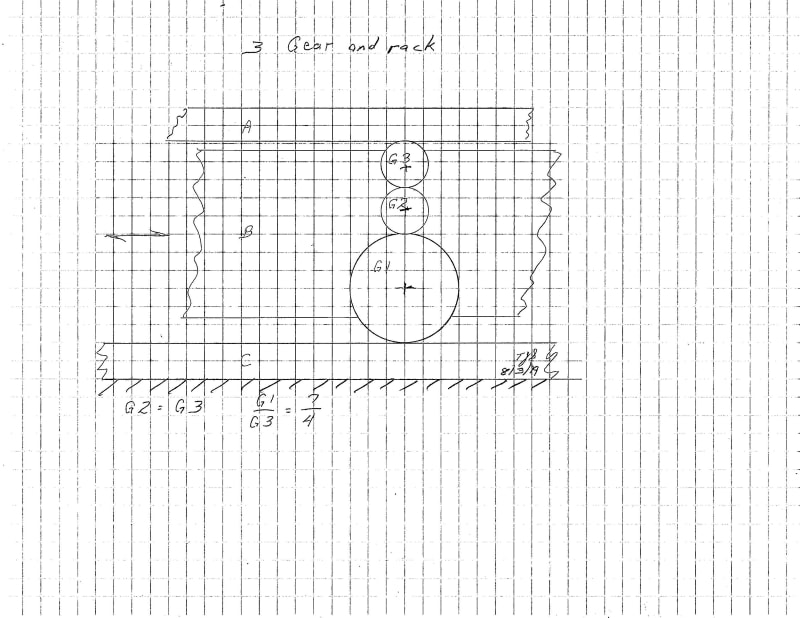Hi
I have a problem that i hope someone can help me with
I have 3 items
item C is a fixed plate with a length of 900mm
item B is a plate 900mm long it is connected to C with linear bearings and needs to move a total of 400mm . This happens already by using a linear actuator that is connected to the right side of C and right hand of B. when activated this works perfect to push B out 400mm.
Item A is connected to B with linear bearings. This item needs to move 700mm along the bearing until it is flush with left side of B.
what i need is a solution by using a rack and pinion setup to create this movement
i THINK that if a rack was fixed to right of part c and allowed to slide on the side of B . A pinion would be fixed to the side of A so when b moves the pinion would be forced to turn which would create forward movement in A.
if this works i would need to know the ratio of teeth on the pinion as the rack would move 400mm and part A 700mm
Would appreciate any help ive attached a diag of how i think it should be set up but i may be totally wrong
I could use a linear actuator mounted on B with a 700mm stroke to push A but would rather use some mechanical means
thankyou
I have a problem that i hope someone can help me with
I have 3 items
item C is a fixed plate with a length of 900mm
item B is a plate 900mm long it is connected to C with linear bearings and needs to move a total of 400mm . This happens already by using a linear actuator that is connected to the right side of C and right hand of B. when activated this works perfect to push B out 400mm.
Item A is connected to B with linear bearings. This item needs to move 700mm along the bearing until it is flush with left side of B.
what i need is a solution by using a rack and pinion setup to create this movement
i THINK that if a rack was fixed to right of part c and allowed to slide on the side of B . A pinion would be fixed to the side of A so when b moves the pinion would be forced to turn which would create forward movement in A.
if this works i would need to know the ratio of teeth on the pinion as the rack would move 400mm and part A 700mm
Would appreciate any help ive attached a diag of how i think it should be set up but i may be totally wrong
I could use a linear actuator mounted on B with a 700mm stroke to push A but would rather use some mechanical means
thankyou


